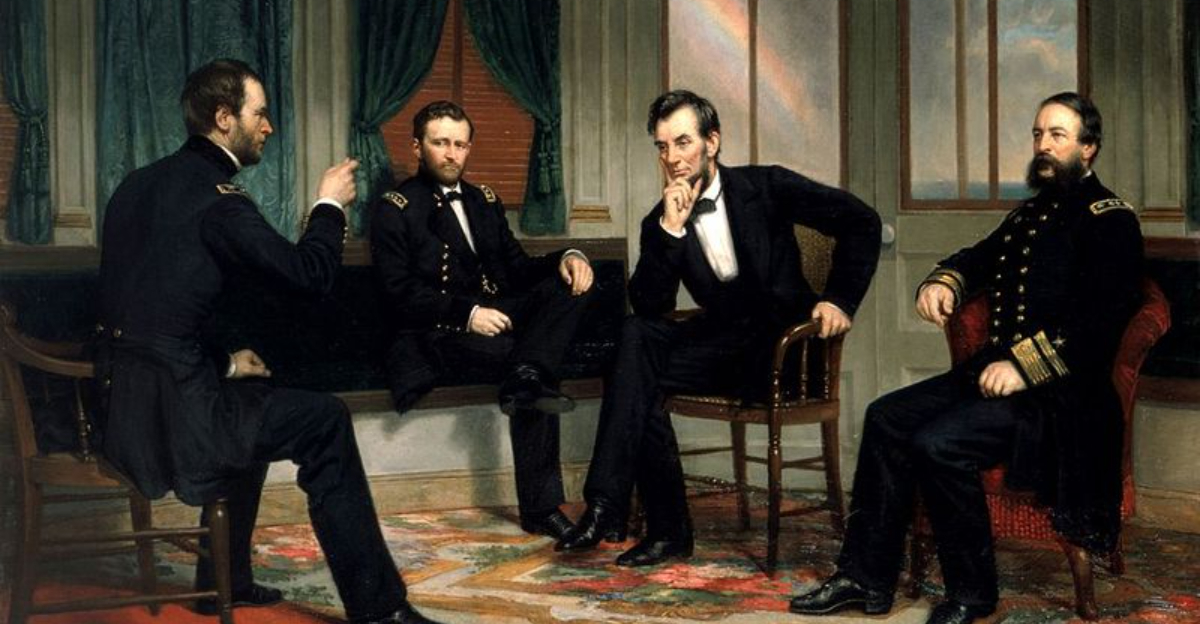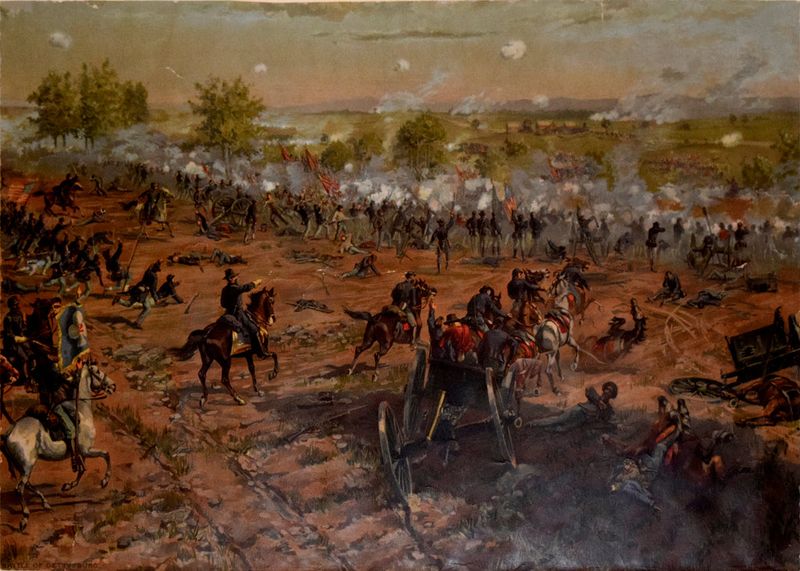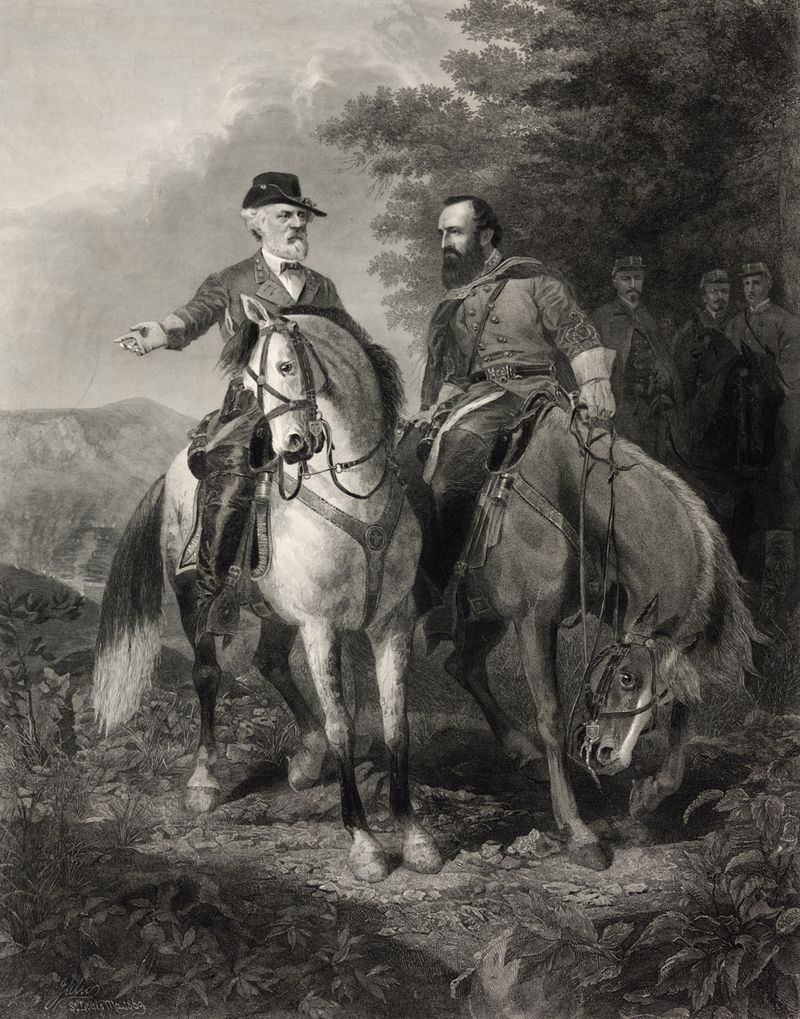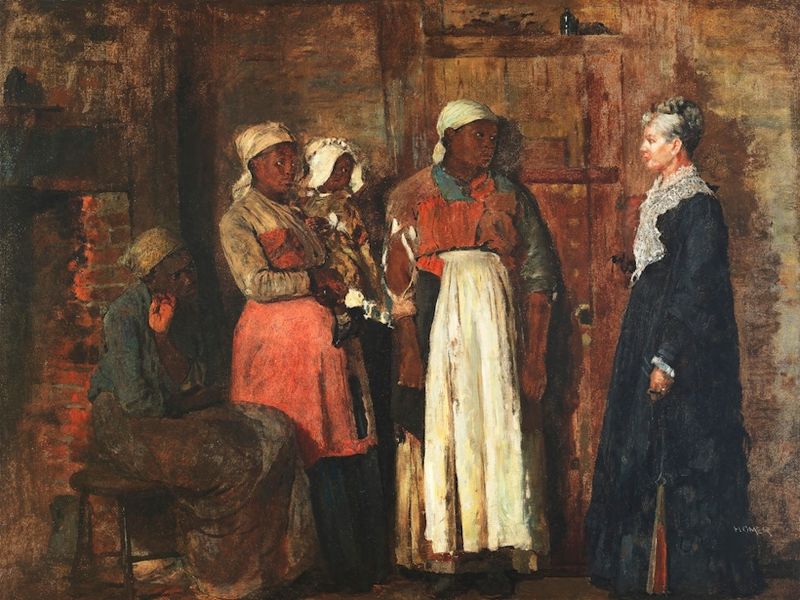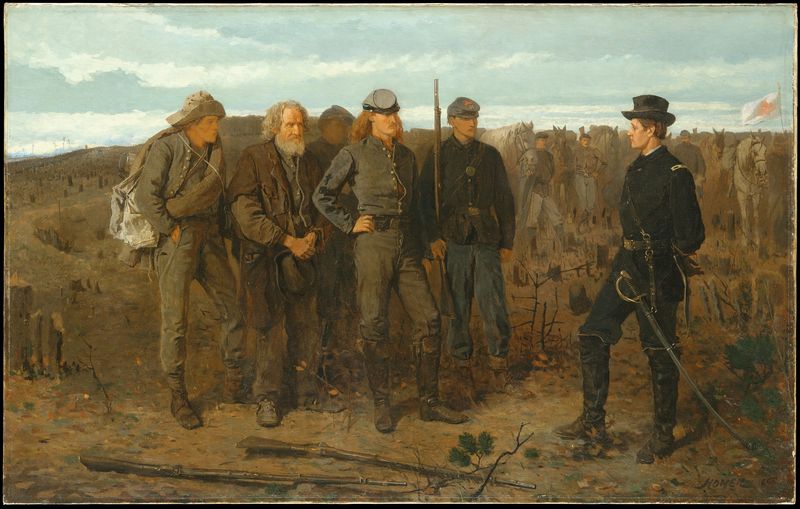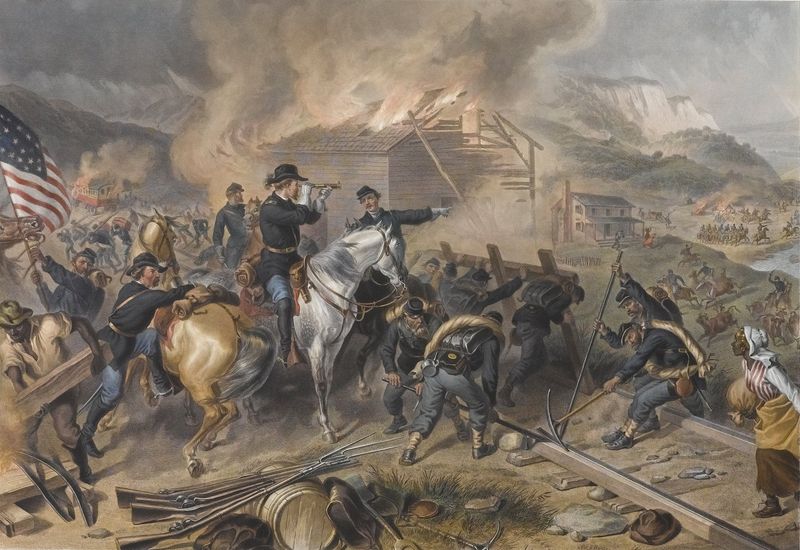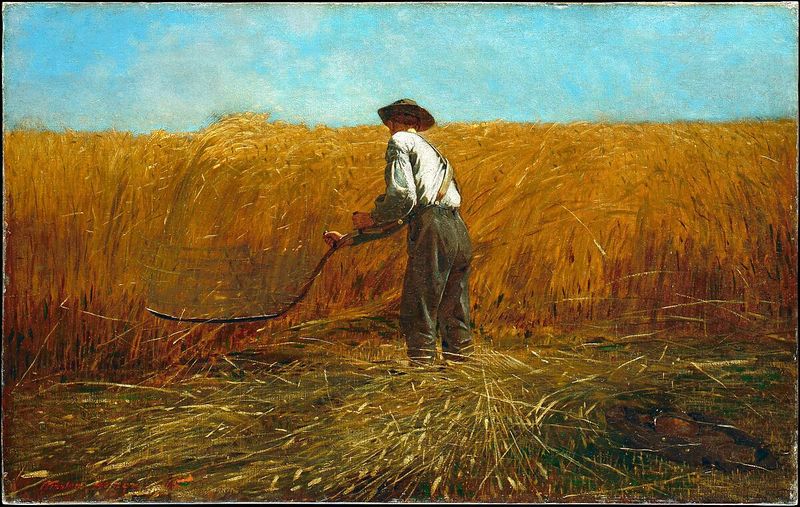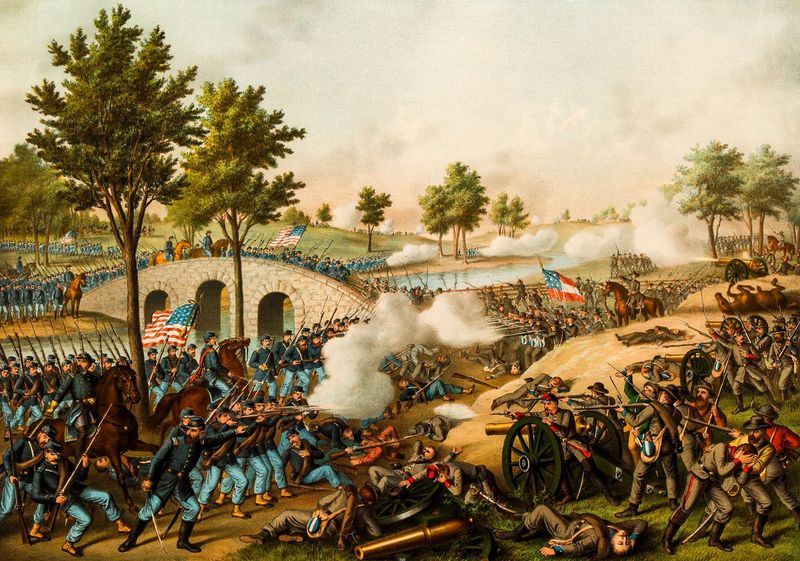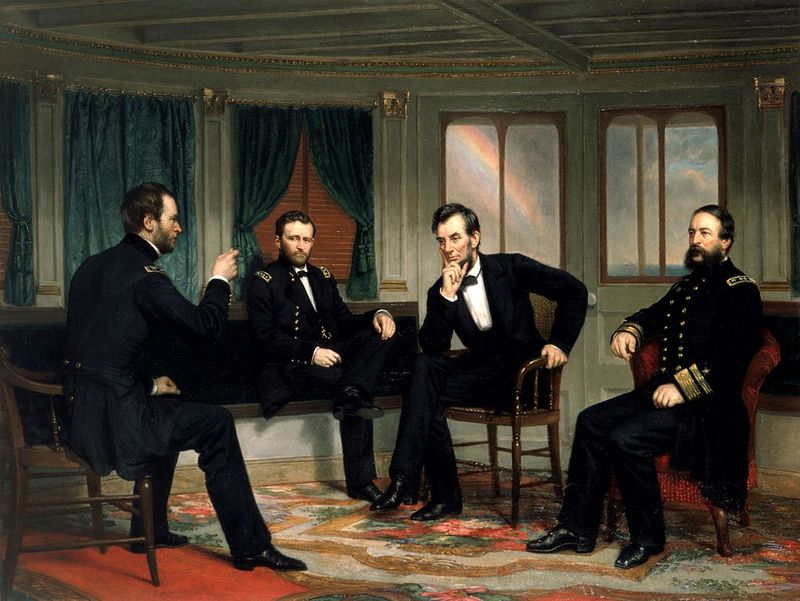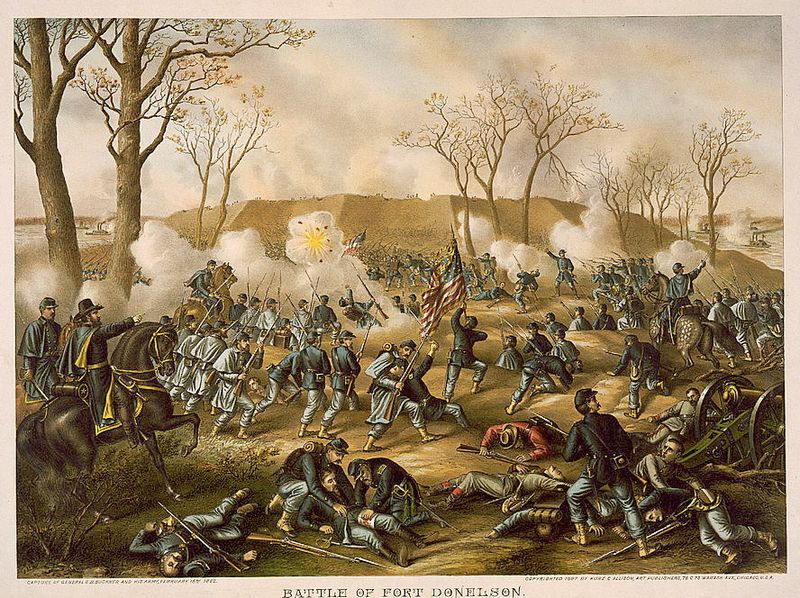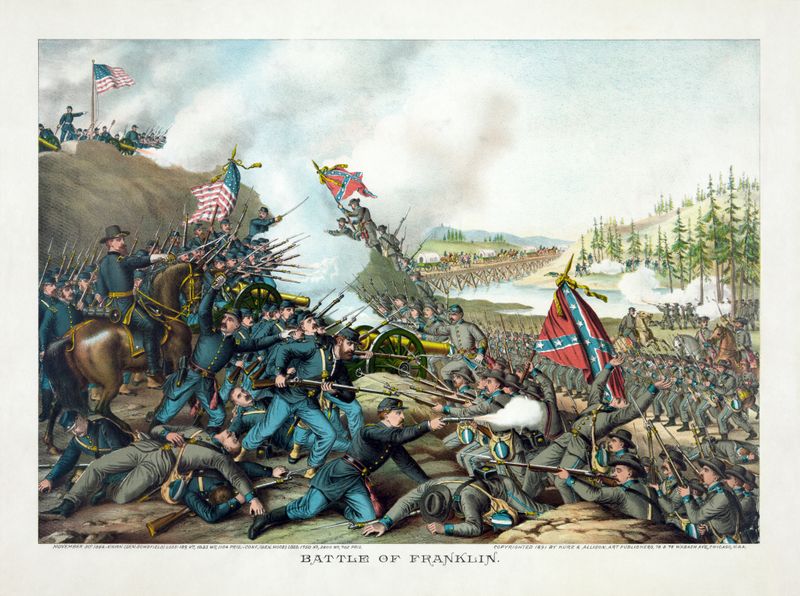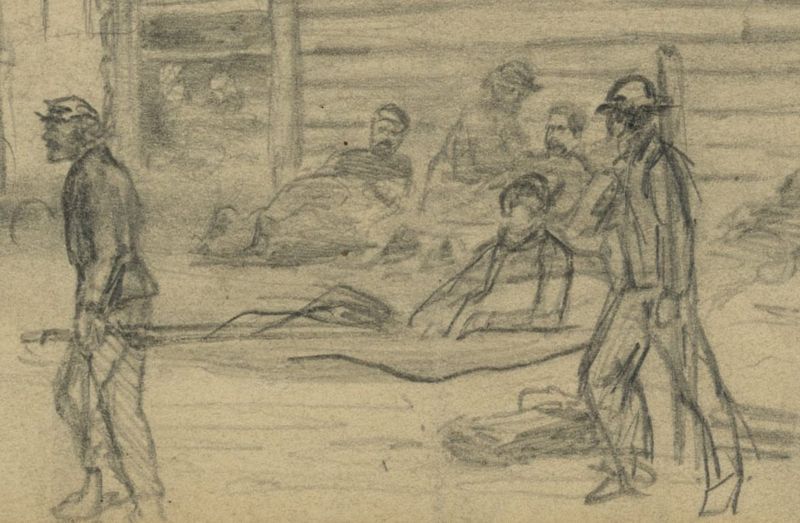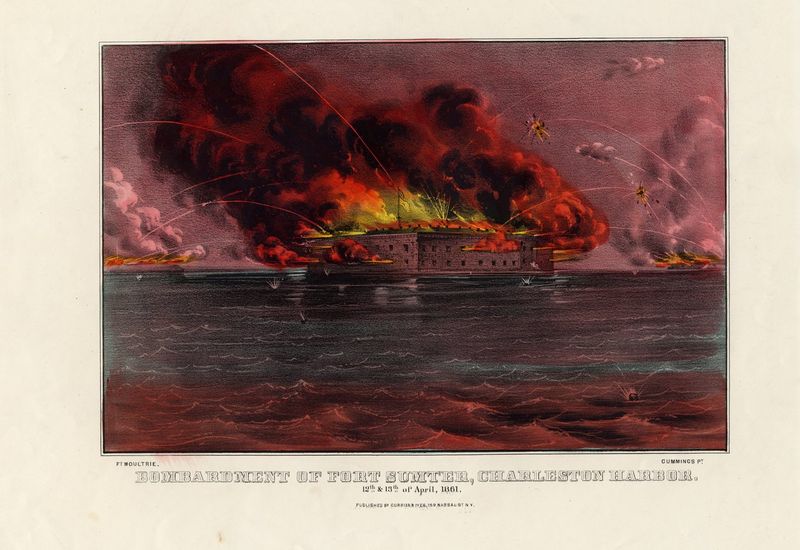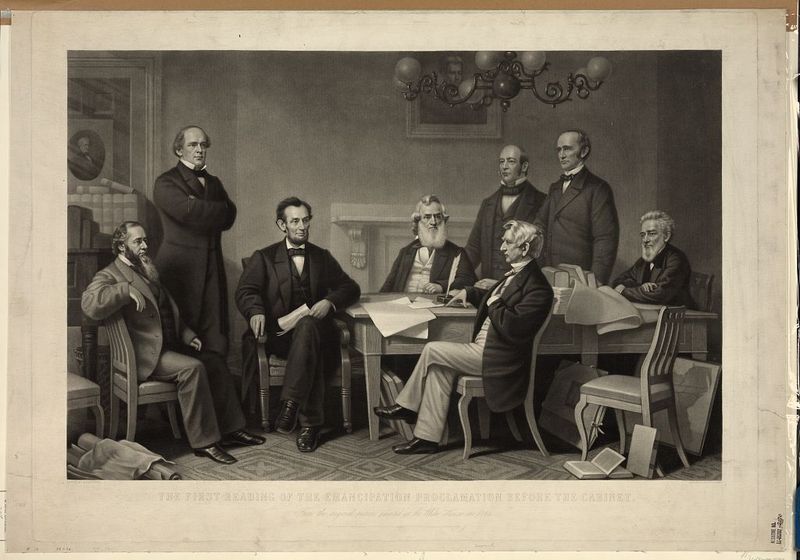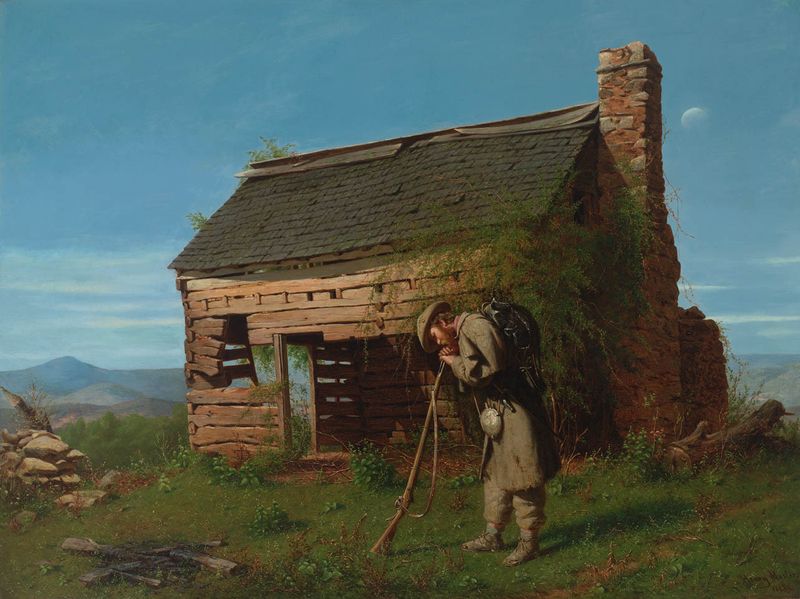The Civil War wasn’t just fought on the battlefield—it was etched into memory through the brushstrokes of artists who captured the emotion, chaos, and humanity in ways textbooks never could. These 14 iconic paintings bring that turbulent era to life, each telling a story that goes beyond dry facts and dates.
1. The Battle of Gettysburg by Thure de Thulstrup
Amidst the fury of Gettysburg, Thure de Thulstrup crafts a visual feast of Pickett’s Charge. The painting vibrates with the energy of clashing forces, capturing the desperation and valor of soldiers caught in the fray. A moment frozen in time, the painting allows viewers to feel the thunderous roar of cannonades and the palpable tension on the battlefield.
Thulstrup’s attention to detail is unmatched, offering a profound glimpse into one of the war’s most infamous confrontations. This piece evokes a sense of honor and tragedy, reminding us of the human cost of war.
2. The Last Meeting of Lee and Jackson by Everett B.D. Julio
The poignant farewell between Confederate icons, Robert E. Lee and Stonewall Jackson, is immortalized by Everett B.D. Julio. In a setting brimming with melancholy, Jackson’s impending fate at Chancellorsville looms large. The painting captures the solemnity and deep respect shared between these leaders.
As their eyes meet, the weight of battles fought together is palpable. Julio’s brushstrokes convey the tragedy of war and the bonds formed amidst chaos. This piece serves as a tribute to the enduring legacies of Lee and Jackson, capturing a fleeting yet significant moment in history.
3. A Visit from the Old Mistress by Winslow Homer
Winslow Homer’s “A Visit from the Old Mistress” unfolds a narrative of post-war tension and uncertain freedom. The painting offers an unflinching look at a formerly enslaved family confronting their ex-owner. The silence in the room speaks volumes, reflecting the complicated dynamics of emancipation.
Homer’s composition is a masterclass in conveying emotion through subtle gestures and glances. The work challenges viewers to consider the lingering shadows of slavery and the enduring quest for dignity and equality. This piece is a testament to the power of art in capturing societal shifts.
4. Prisoners from the Front by Winslow Homer
In “Prisoners from the Front,” Winslow Homer captures the stark realities of war’s aftermath. Union General Barlow stands firm, confronting Confederate prisoners. The painting humanizes the enemy, offering a somber reflection on the psychological toll of conflict.
Homer’s use of light and shadow brings depth to the faces of both captors and captives. The piece resonates with themes of dignity and defeat, drawing the viewer into the complex emotions of the moment. This artwork serves as a poignant reminder of the shared humanity amidst the brutality of war.
5. Sherman’s March to the Sea by F.O.C. Darley
F.O.C. Darley’s portrayal of Sherman’s March to the Sea reflects the sweeping devastation of total war. The painting eschews glory, focusing instead on the smoldering ruins and weary soldiers that define the march. Civilians caught in the brutal path add layers of tragedy.
This artwork is a stark reminder of the war’s cost beyond the battlefield—homes destroyed, lives upended, and communities forever altered. Darley’s brush captures the haunting beauty of destruction, urging viewers to reflect on the broader implications of conflict in shaping history.
6. The Veteran in a New Field by Winslow Homer
Winslow Homer’s “The Veteran in a New Field” encapsulates the dual themes of peace and mortality. A Union soldier, now a civilian, trades his rifle for a scythe, harvesting a field. This imagery serves as a potent symbol of life’s cycles and the war’s haunting aftermath.
The simplicity of the composition belies its profound message—peace is hard-won, yet the specter of conflict lingers. Homer’s work invites contemplation on the transition from soldier to civilian, and the quiet resilience required to rebuild. It’s a tribute to those who endured.
7. Battle of Antietam by Kurz & Allison
The chromolithograph of the Battle of Antietam by Kurz & Allison presents a vivid, romanticized view of one of history’s bloodiest days. Despite its artistic liberties, the piece offers a dynamic and colorful portrayal that draws viewers into the battlefield’s chaos.
Vibrant uniforms and exaggerated action highlight the drama of the moment, capturing the visceral intensity of the encounter. This artwork provides a gateway to understanding the scale of the conflict, reminding us of the courage and carnage that marked the Civil War’s pivotal moments.
8. The Peacemakers by George P.A. Healy
George P.A. Healy’s “The Peacemakers” immortalizes a crucial wartime council between Lincoln, Sherman, Grant, and Admiral Porter. The painting depicts a moment of strategic reflection, just weeks before the war’s end and Lincoln’s assassination.
Healy’s composition captures the gravity and camaraderie among the leaders, offering insight into their shared resolve. The scene is imbued with a sense of anticipation and the weight of impending victory. This artwork pays homage to the collaborative spirit and leadership that shaped the nation’s future.
9. Battle of Fort Donelson by Kurz & Allison
The chromolithograph of the Battle of Fort Donelson by Kurz & Allison dramatizes an early Union success in the Western Theater. The painting captures the intensity and strategic importance of the battle.
With vibrant colors and dynamic action, the artwork conveys the chaos and valor of the conflict. It serves as a visual reminder of the turning points that shaped the course of the war. This piece highlights the fortitude and determination of those who fought, offering a window into the broader narrative of triumph and struggle.
10. Battle of Franklin by Kurz & Allison
The chromolithograph of the Battle of Franklin by Kurz & Allison captures the chaos of a late-war Confederate disaster. The painting’s bright palette and exaggerated action bring the scene to life.
This artwork encapsulates the frenzy and desperation of the battle, offering a vivid window into the war’s later stages. It reflects the tumultuous nature of the conflict and the shifting tides that defined its outcome. The piece is a visual testament to the courage and chaos that marked the Civil War’s endgame.
11. Civil War Hospital Scene by Alfred Waud
Alfred Waud’s “Civil War Hospital Scene” presents a somber view of the war’s brutal realities. The sketch depicts the interior of a field hospital, filled with wounded soldiers and medical staff.
Waud’s detailed portrayal emphasizes the harsh conditions and the tireless efforts of those tending to the injured. The artwork captures the intersection of fear and hope, highlighting the human stories behind the battle lines. It’s a poignant reminder of the sacrifices made and the resilience shown by those who bore the war’s physical and emotional scars.
12. The Bombardment of Fort Sumter by Currier & Ives
Currier & Ives’ vivid interpretation of the Bombardment of Fort Sumter marks the Civil War’s explosive beginning. The artwork captures the intensity and drama of the moment, with thick smoke and exploding masonry.
This piece brings the viewer into the heart of the conflict’s start, emphasizing the stark reality of war’s arrival. The dynamic composition reflects the uncertainty and determination that defined this pivotal moment. It’s a striking visual narrative that underscores the tensions and turmoil that ignited a nation.
13. Lincoln’s First Reading of the Emancipation Proclamation by Francis Bicknell Carpenter
Francis Bicknell Carpenter’s “Lincoln’s First Reading of the Emancipation Proclamation” immortalizes a transformative moment. Lincoln is depicted sharing his historic decree with a dignified audience, forever altering the war’s purpose.
Carpenter’s composition emphasizes the gravity and optimism of the occasion. The painting captures the anticipation and solemnity as Lincoln’s words echo through history. This artwork serves as a powerful reminder of the struggle for freedom and equality, highlighting Lincoln’s role in reshaping the nation’s future.
14. The Lost Cause by Henry Mosler
Henry Mosler’s “The Lost Cause” paints an idealized vision of Southern civilians mourning their dead. The artwork reflects the cultural mythologizing of Confederate sacrifice.
Mosler’s composition conveys the deep sense of loss and longing, highlighting the emotional landscape of the post-war South. The piece serves as a window into the regional identity shaped by defeat and mourning. It’s a poignant exploration of memory and myth, capturing the complex legacy of the Civil War in Southern consciousness.
